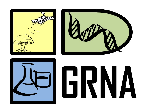Banca de QUALIFICAÇÃO: JEFFERSON ROSSY PEREIRA DA SILVA
Uma banca de QUALIFICAÇÃO de MESTRADO foi cadastrada pelo programa.STUDENT : JEFFERSON ROSSY PEREIRA DA SILVA
DATE: 29/08/2023
TIME: 14:30
LOCAL: Auditório NTB, UFOPA/Campus Tapajós
TITLE:
IDENTIFICATION OF TREE CANOPIES IN AERIAL IMAGES OF FLONA TAPAJÓS USING DEEP LEARNING
KEY WORDS:
DeepForest. Transfer Learning. Remote Sensing. RGB. Amazon.
PAGES: 37
BIG AREA: Outra
AREA: Ciências Ambientais
SUMMARY:
The detection of individual trees and their quantification is an important step in ecology, being essential for forest management, especially in conservation units, and automating this process has been a challenge. This traditional detection can be expensive and limited to small spatial scales; however, remote sensing can be a strong ally in this regard by allowing coverage over large areas. By using aerial images in conjunction with Deep Learning models, we can achieve this automated detection and contribute by integrating new technologies into the field of ecology. For this reason, the aim of this study was to analyze effective Deep Learning-based tree detection approaches in RGB images obtained from UAVs in rainforests. For this purpose, areas in FLONA Tapajós will be selected, where RGB images with a GSD of 10cm/pixel will be collected using a UAV to form 1km² orthomosaics in tiff format. The images will be used in the DeepForest model, running for 10, 15, and 30 epochs. However, to obtain more robust estimates, each epoch count will be executed 30 times. The model will be evaluated using Recall, Precision, and F1 Score, with descriptive statistics obtained from the 30 runs. For the development of the qualification, a case study was conducted using an existing dataset from the San Joaquin Experimental Range located in the National Ecological Observatory Network in the United States, to evaluate the DeepForest model. The dataset has 91 images of 1km² with a GSD of 10cm/pixel. The results show a gradual increase in Recall, Precision, and F1 score as the number of epochs increases, however, a decrease in these values is observed when using 30 epochs. The results suggest that 15 epochs might be the best choice when using the model under the proposed conditions. Therefore, the DeepForest model was evaluated and has proven to be an effective approach for tree detection, using an existing database that has been utilized in other studies. It is hoped that by using aerial images from FLONA Tapajós under the same conditions, similar results will be obtained.
COMMITTEE MEMBERS:
Presidente - 1963026 - ANDERSON ALVARENGA DE MOURA MENESES
Externo à Instituição - DAVI GUIMARÃES DA SILVA - IFPA
Interno - ***.241.137-** - RONIE SILVA JUVANHOL - UFPI




